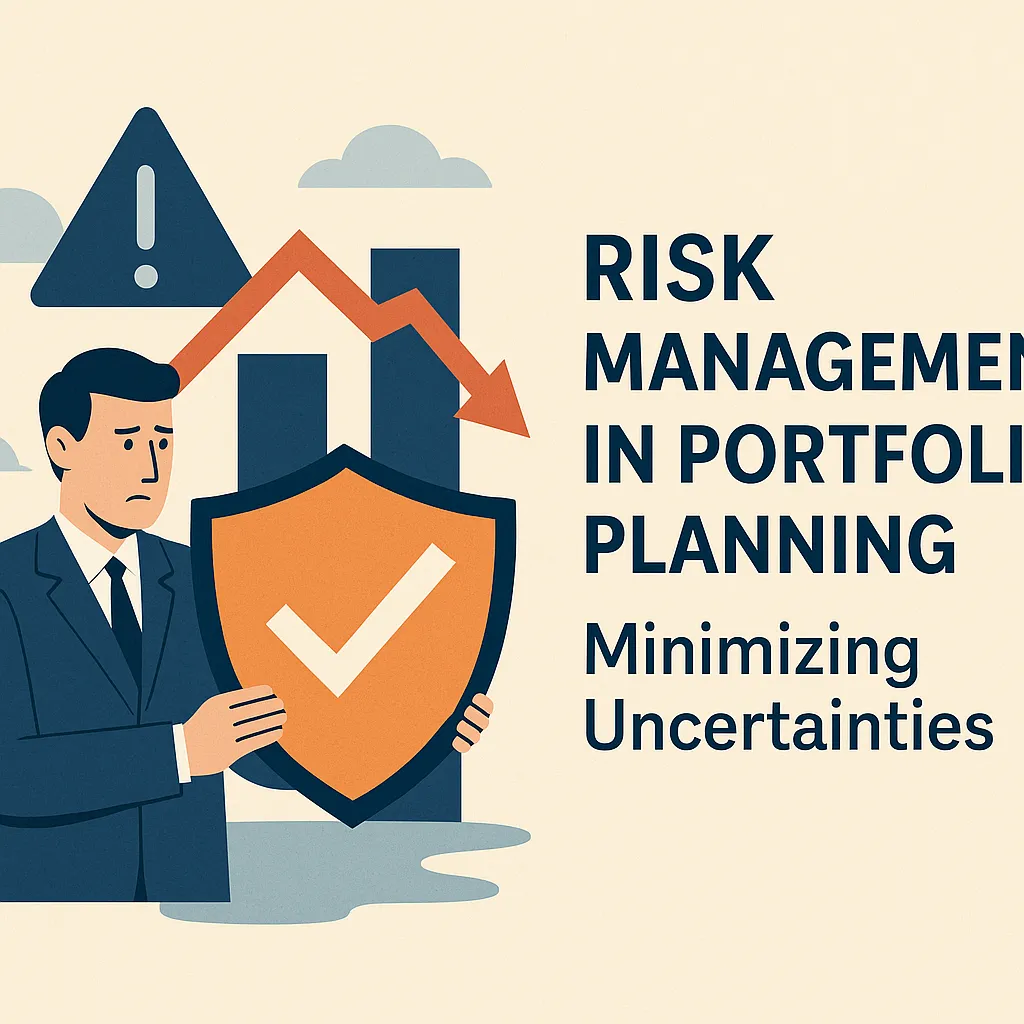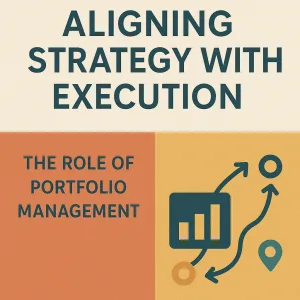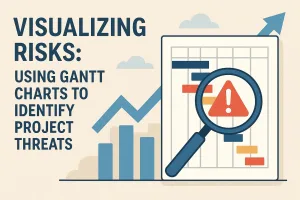Introduction to Portfolio Planning
Portfolio planning serves as a critical framework that enables organizations to align their projects with strategic objectives while optimizing resource allocation. It involves the systematic selection, prioritization, and management of a collection of projects and programs to achieve specific business goals. The significance of portfolio planning lies in its ability to provide a holistic view of all ongoing and proposed projects, ensuring that they collectively contribute to the organization’s strategic vision.
Definition and Significance of Portfolio Planning
Portfolio planning can be defined as the process of evaluating and managing a set of projects to maximize their value and minimize risks. This process is essential for several reasons:
- Alignment with Strategic Goals: Portfolio planning ensures that all projects are aligned with the organization’s strategic objectives, thereby enhancing the likelihood of achieving desired outcomes.
- Resource Optimization: By assessing the resource requirements of various projects, organizations can allocate resources more effectively, avoiding overallocation or underutilization.
- Performance Monitoring: A well-structured portfolio allows for continuous monitoring and evaluation of project performance, enabling timely adjustments to strategies and resource allocation.
Relationship Between Portfolio Planning and Risk Management
The relationship between portfolio planning and risk management is inherently intertwined. Effective portfolio planning not only identifies potential risks associated with individual projects but also evaluates how these risks impact the overall portfolio. Here are some key aspects of this relationship:
- Risk Identification: During the portfolio planning process, project managers can identify risks at both the project and portfolio levels. This proactive approach allows for early detection of potential issues that could affect project success.
- Risk Prioritization: Portfolio planning facilitates the prioritization of projects based on their risk profiles. Projects with higher risks may require more stringent oversight or additional resources to mitigate potential negative impacts.
- Resource Allocation for Risk Mitigation: By understanding the risk landscape, organizations can allocate resources strategically to projects that pose the greatest risk, ensuring that risk management efforts are focused where they are most needed.
Understanding Risks in Project Management
In project management, risks are defined as uncertain events or conditions that, if they occur, can have a positive or negative effect on project objectives. Risks can arise from various sources, including:
- Technical Risks: These involve uncertainties related to technology, such as the feasibility of new tools or methods.
- Financial Risks: Fluctuations in budget, funding availability, or economic conditions can impact project viability.
- Operational Risks: These pertain to internal processes, including resource availability, team dynamics, and organizational changes.
- External Risks: Factors outside the organization, such as regulatory changes, market dynamics, or natural disasters, can also pose significant threats to project success.
By integrating risk management into the portfolio planning process, organizations can create a robust framework that not only anticipates potential challenges but also develops strategies to mitigate them effectively. This proactive approach ultimately enhances the likelihood of project success and contributes to the overall resilience of the organization.
Understanding Risks in Portfolio Management
Effective portfolio planning is crucial for project managers and risk managers alike, as it helps in identifying, assessing, and mitigating risks that can adversely affect project outcomes. By understanding the various types of risks associated with project portfolios, organizations can implement strategies to minimize uncertainties and enhance overall performance. Below are key points to consider regarding risks in portfolio management.
1. Categorizing Risks
Risks in portfolio management can be broadly categorized into four main types:
- Strategic Risks: These risks arise from the alignment of projects with the organization’s strategic objectives. Poorly defined goals or changes in market conditions can lead to strategic misalignment, resulting in wasted resources and missed opportunities.
- Operational Risks: These involve risks related to the internal processes of project execution. Factors such as resource allocation, team dynamics, and operational inefficiencies can hinder project progress and lead to delays or failures.
- Financial Risks: Financial uncertainties, including budget overruns, funding shortages, and fluctuating costs, can significantly impact project viability. Effective financial risk management is essential to ensure that projects remain within budget and deliver expected returns.
- External Risks: These risks stem from outside the organization and can include regulatory changes, economic downturns, and natural disasters. External factors can disrupt project timelines and affect stakeholder engagement, making it vital to have contingency plans in place.
2. Consequences of Unmanaged Risks
Failing to address risks in portfolio management can have severe consequences on overall portfolio performance:
- Project Delays: Unmanaged risks often lead to delays in project timelines, which can cascade into other projects within the portfolio, affecting overall delivery schedules.
- Increased Costs: Risks that are not identified and mitigated can result in unexpected expenses, leading to budget overruns and reduced profitability.
- Resource Misallocation: Without proper risk assessment, resources may be allocated inefficiently, resulting in some projects being over-resourced while others lack necessary support.
- Reputational Damage: Frequent project failures due to unmanaged risks can harm an organization’s reputation, making it difficult to secure future projects or investments.
The Role of Effective Portfolio Planning in Risk Mitigation
Effective portfolio planning is a critical component in project management, particularly when it comes to minimizing uncertainties and mitigating risks. By adopting a comprehensive approach to portfolio planning, organizations can enhance their ability to identify, assess, and manage risks across various projects. Here are some key points illustrating how effective portfolio planning contributes to risk mitigation:
1. Enhanced Risk Identification
Comprehensive portfolio planning facilitates a thorough understanding of the risks associated with each project within the portfolio. By evaluating the interdependencies and potential impacts of various projects, risk managers can:
- Identify Risks Early: A well-structured portfolio allows for the early identification of risks that may affect multiple projects. This proactive approach enables teams to address potential issues before they escalate.
- Utilize Risk Assessment Tools: Portfolio planning often incorporates risk assessment frameworks and tools that help in systematically identifying risks, categorizing them, and determining their potential impact on project outcomes.
2. Alignment with Strategic Goals
Aligning projects with the organization’s strategic goals is essential for minimizing risks. When projects are closely tied to the overarching objectives of the organization, the likelihood of encountering misaligned efforts and wasted resources decreases. Key aspects include:
- Prioritization of Projects: Effective portfolio planning ensures that projects are prioritized based on their alignment with strategic goals. This prioritization helps in focusing resources on initiatives that offer the highest value and lowest risk.
- Clear Objectives and Metrics: By establishing clear objectives and performance metrics aligned with strategic goals, project managers can better monitor progress and make informed decisions that mitigate risks.
3. Resource Allocation and Prioritization
Resource allocation is a fundamental aspect of portfolio planning that directly impacts risk management. Properly allocating resources can significantly reduce uncertainties and enhance project success rates. Consider the following:
- Optimized Resource Distribution: Effective portfolio planning allows for the optimal distribution of resources across projects, ensuring that critical projects receive the necessary support while minimizing the risk of resource shortages in less critical areas.
- Flexibility and Responsiveness: A well-planned portfolio provides the flexibility to reallocate resources as needed in response to emerging risks or changes in project priorities. This adaptability is crucial for managing unforeseen challenges and maintaining project momentum.
Tools and Techniques for Risk Assessment in Portfolio Planning
Effective portfolio planning is crucial for minimizing uncertainties and mitigating risks in project management. By employing various tools and methodologies, risk managers and project managers can systematically assess potential risks associated with their portfolios. Here are some key tools and techniques that can enhance risk assessment during portfolio planning:
1. Risk Assessment Tools
- SWOT Analysis: This tool helps identify the Strengths, Weaknesses, Opportunities, and Threats related to a project or portfolio. By analyzing internal and external factors, project managers can pinpoint potential risks and develop strategies to leverage strengths and opportunities while addressing weaknesses and threats.
- PESTLE Analysis: This framework examines the Political, Economic, Social, Technological, Legal, and Environmental factors that could impact a project. By understanding these external influences, managers can better anticipate risks and adapt their portfolio strategies accordingly.
- Risk Matrices: A risk matrix is a visual tool that helps prioritize risks based on their likelihood and impact. By categorizing risks into different levels of severity, project managers can focus their attention on the most critical risks that require immediate action.
2. Quantitative vs. Qualitative Assessment Methods
- Quantitative Assessment: This method involves numerical analysis to evaluate risks. Techniques such as Monte Carlo simulations and statistical modeling can provide data-driven insights into the probability and impact of risks. Quantitative assessments are particularly useful for projects with measurable variables, allowing for precise risk quantification.
- Qualitative Assessment: In contrast, qualitative assessment relies on subjective judgment and expert opinions to evaluate risks. Techniques such as interviews, focus groups, and brainstorming sessions can help gather insights from team members and stakeholders. This approach is beneficial for identifying risks that may not be easily quantifiable but are nonetheless significant.
3. Importance of Stakeholder Input
Engaging stakeholders in the risk identification process is essential for comprehensive risk assessment. Stakeholders, including team members, clients, and external partners, can provide valuable perspectives on potential risks based on their experiences and expertise. Their input can help:
- Enhance Risk Identification: Different stakeholders may have unique insights into risks that project managers might overlook. By incorporating diverse viewpoints, the risk identification process becomes more robust.
- Foster Buy-In and Support: Involving stakeholders in the risk assessment process can lead to greater acceptance of risk management strategies. When stakeholders feel their concerns are acknowledged, they are more likely to support the implementation of risk mitigation measures.
- Improve Communication: Open dialogue with stakeholders about risks fosters transparency and trust. This communication is vital for ensuring that everyone is aligned on risk management strategies and understands their roles in mitigating risks.
Building a Risk-Responsive Portfolio Strategy
Effective portfolio planning is crucial for mitigating risks and uncertainties that can derail projects. A well-structured portfolio strategy not only aligns projects with organizational goals but also enhances the ability to respond to potential risks. Here are key strategies for developing a risk-responsive portfolio:
1. Creation of a Risk Register
A risk register is an essential tool for ongoing monitoring and evaluation of risks within a project portfolio. It serves as a centralized repository for identifying, assessing, and managing risks throughout the project lifecycle. Here’s how to effectively create and utilize a risk register:
- Identification of Risks: Begin by systematically identifying potential risks associated with each project in the portfolio. This can include financial, operational, technical, and external risks.
- Assessment and Prioritization: Evaluate the likelihood and impact of each identified risk. Prioritize them based on their potential effect on project outcomes, allowing for focused management efforts.
- Monitoring and Review: Regularly update the risk register to reflect new risks and changes in existing risks. This ongoing evaluation ensures that risk management strategies remain relevant and effective.
By maintaining a comprehensive risk register, project managers can proactively address risks, thereby minimizing their impact on project success.
2. Significance of Flexible Project Management Methodologies
Adopting flexible project management methodologies, such as Agile and Lean, is vital for creating a responsive portfolio strategy. These methodologies emphasize adaptability and iterative progress, which are essential in managing uncertainties. Here’s how they contribute to risk management:
- Agile Methodology: Agile promotes iterative development and frequent reassessment of project goals. This allows teams to respond quickly to changes and emerging risks, ensuring that projects remain aligned with stakeholder expectations.
- Lean Principles: Lean focuses on maximizing value while minimizing waste. By streamlining processes and eliminating non-value-added activities, project teams can better allocate resources to address risks and enhance project efficiency.
Incorporating these methodologies into portfolio planning enables organizations to pivot quickly in response to unforeseen challenges, thereby reducing the likelihood of project failure.
3. Continuous Learning and Adaptation
The dynamic nature of project environments necessitates a culture of continuous learning and adaptation within portfolio management. This approach involves:
- Feedback Loops: Establish mechanisms for capturing lessons learned from completed projects. Analyzing past performance helps identify patterns and informs future risk management strategies.
- Training and Development: Invest in training programs that equip project managers and teams with the skills to recognize and respond to risks effectively. Continuous professional development fosters a proactive risk management mindset.
- Stakeholder Engagement: Regularly engage stakeholders to gather insights and feedback. Their perspectives can provide valuable information on potential risks and help refine risk management approaches.
By fostering a culture of continuous learning, organizations can enhance their resilience against risks, ensuring that their project portfolios remain robust and adaptable.
Conclusion: The Future of Risk Management in Portfolio Planning
Effective portfolio planning is crucial for minimizing uncertainties and enhancing the likelihood of project success. As we conclude our exploration of risk management within portfolio planning, it is essential to reiterate several key takeaways that underscore the importance of a proactive approach to risk management.
- Importance of Effective Portfolio Planning: Effective portfolio planning serves as a foundational element in identifying, assessing, and mitigating risks across various projects. By strategically aligning projects with organizational goals and resource availability, project managers can better anticipate potential challenges and uncertainties. This alignment not only streamlines decision-making but also enhances the overall resilience of the project portfolio against unforeseen events.
- Proactive Risk Management Approaches: Encouraging a proactive stance towards risk management is vital for project portfolios. This involves not only identifying risks at the outset but also continuously monitoring and adapting to new risks as they arise. Implementing regular risk assessments, fostering a culture of open communication, and utilizing risk management tools can empower teams to respond swiftly and effectively to potential threats, thereby safeguarding project outcomes.
- Future Trends in Risk Management and Portfolio Planning: Looking ahead, several trends are poised to shape the future of risk management in portfolio planning. The integration of advanced technologies, such as artificial intelligence and machine learning, is expected to revolutionize how risks are identified and managed. These technologies can analyze vast amounts of data to predict potential risks and provide insights that enhance decision-making processes. Additionally, the growing emphasis on agile methodologies will likely encourage more adaptive risk management practices, allowing project managers to pivot quickly in response to changing circumstances.
In summary, the future of risk management in portfolio planning hinges on the commitment to proactive strategies and the adoption of innovative technologies. By prioritizing effective portfolio planning and embracing a forward-thinking approach to risk management, organizations can significantly reduce uncertainties and enhance their project success rates. As risk managers and project managers navigate this evolving landscape, the integration of these principles will be essential in driving sustainable project outcomes and achieving strategic objectives.
Find out more about Shaun Stoltz https://www.shaunstoltz.com/about/.
This post was written by an AI and reviewed/edited by a human.



